The National Labor Relations Board recently proclaimed an increase in union representation petitions nationwide. The NLRB noted that such filings are up 57% during the first half of the federal 2022 fiscal year (October 1-March 31) compared to the first half of FY 2021. A more in-depth look at the statistics, including a focus on filings in New York State, suggests that election petitions are only returning to pre-COVID levels. And a significant portion of the recent union elections involves a single employer. Whether there is a COVID-independent underlying trend of workers more eagerly pursuing unionization remains to be seen.
NLRB Press Release
The NLRB announced an increase in both representation petitions and unfair labor practice charges in an April 6, 2022 press release. The announcement aimed at justifying additional funding for the agency. For example, it asserts, “The increase in cases comes during a period of critical funding and staffing shortages for the Agency.” The press release notes that the NLRB’s Congressional appropriation has remained the same for nine years.
NLRB General Counsel Jennifer Abruzzo concluded the press release by arguing, “Right now, there is a surge in labor activity nationwide, with workers organizing and filing petitions for more union elections than they have in the last ten years.”
The press release states that 1,174 “union representation petitions were filed at the NLRB” between October 1, 2021, and March 31, 2022. This number reflects all “representation” petition filings during that time. These include both petitions from unrepresented employees seeking to unionize and various other categories of petitions regarding existing bargaining units. Most notably, it also includes decertification petitions from employees trying to vote out their existing representative to go union-free. These “RC” and “RD” petitions, as described below, account for over 90% of the representation cases referenced in the NLRB’s April 6th press release. (Other less common cases include unit clarification petitions seeking to adjust which positions are included in an existing bargaining unit and petitions filed by employers who believe their employees no longer support the union.)
Representation Petitions – RC
The following description from the NLRB website offers a concise explanation of the process by which employees can seek an election to determine whether they will become unionized:
Employees or a union may file a petition for a representation election (RC) after collecting signatures from at least 30% of workers in the potential bargaining unit. Petitions that are not withdrawn or dismissed result in an NLRB-conducted election. A majority of votes decides the outcome.
Nationwide RC Petitions
From 2012 to 2021, employees filed an average of 1,807 RC petitions each fiscal year across the United States. (Note: The NLRB only has jurisdiction over private employers. These data and the related law and procedures do not reflect unionization within the public (e.g., government) sector.)
During this time, petitions ranged from a high of 2,198 in FY 2015 down to 1,269 in FY 2021. It is probably a not mere coincidence that the number rose during the Obama administration and then fell under President Trump, as Republican-led labor boards are understandably seen as less favorable to employees and unions. However, the continued decline at the beginning of the Biden administration would be puzzling but for the COVID-19 pandemic, which began in March 2020–midway through FY 2020.
The following graph splits the data into six-month intervals beginning a year before COVID hit.
Here we see that the greatest decline in the filing of union election petitions occurred in the one-year period following the onset of COVID. During those 12 months, employees only petitioned for unionization 1,163 times. There are many reasons to expect that less unionization would have occurred during this period when many businesses were closed or operating on a more remote basis. The NLRB itself had reduced operations as a result. Plus, generally, workers had more pressing concerns than becoming unionized.
That being said, it is possible that the experiences of the pandemic prompted more employees to seek unionization as the COVID restrictions waned. In the first half of FY 2022, more union election petitions were filed than in the two half-year periods preceding the pandemic–16% more than the first half of FY 2020, but only 4% more than in the second half of FY 2019.
The RC petition filings in the first half of FY 2022 appear to reflect a return to pre-COVID union organizing efforts. However, there is a significant asterisk. At least 178 of the 976 (18%) union election petitions filed in those six months involve Starbucks, which is experiencing a unique proliferation of store-by-store unionization. Without those petitions, the total level would be closer to 800 filings–still below pre-pandemic levels.
New York RC Petitions
Between 2011 and 2020, employees filed an average of approximately 245 RC cases each year in New York. In the past year, only 210 were filed.
New York City was the initial epicenter of the COVID-19 outbreak in the United States. Thus, it would not be surprising that union representation petitions declined sharply in New York in 2020.
The following graph shows a breakdown of RC petition filings over the past six half-fiscal-year periods.
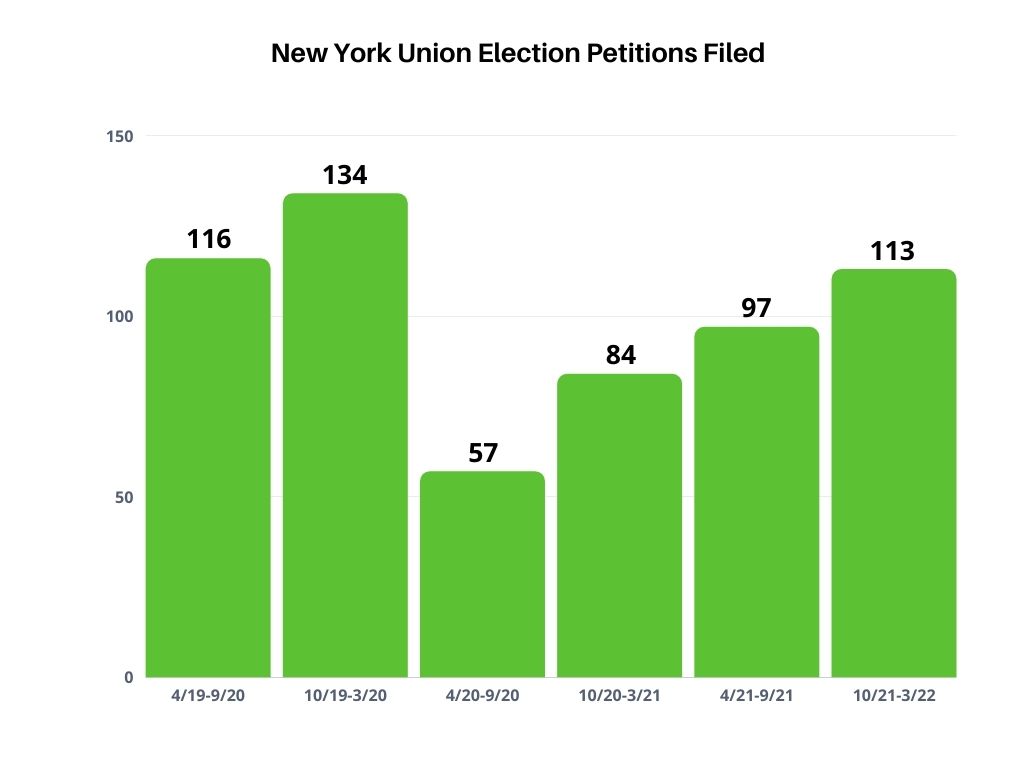
The NLRB is divided into 26 regions across the country. Each region has one or more offices that process cases filed within their geographic area. New York State is split into three NLRB regions. Downstate, Region 2 serves Manhattan, the Bronx, and Orange, Putnam, Rockland, and Westchester counties, while Region 29 serves Brooklyn, Queens, Staten Island, and Nassau and Suffolk counties. Region 3 serves the rest of the state.
In the first six months of the COVID pandemic, RC filings dropped 71% in Region 29. The smaller declines of 46% in Region 2 and 52% in Region 3 were still much higher than the 24% decline experienced outside the state.
Election petitions remain down in Region 29, perhaps reflecting the intensity of the pandemic’s impact in the area. The first-half FY 2022 filings in Regions 2 and 3 are more in line with the apparent national rebound.
But, in Region 3, 11 of the 31 (35%) RC petitions involve Starbucks. In fact, the first Starbucks store to unionize is in Buffalo, where Region 3 is headquartered. Starbucks also accounted for 4 of the 21 filings in Region 29.
Decertification Petitions – RD
Employees who no longer want to be represented by a union may file a decertification (RD) petition upon a showing of support by at least 30% of the workers in a bargaining unit. The filing of decertification petitions has followed a similar trajectory as RC petitions over the past few years. This co-occurrence may further demonstrate that COVID, not an employee shift in pro-union sentiment, is the biggest factor in these data.
In New York, decertification petitions have remained steady over the past three years despite the pandemic. Given the relatively small number of decertification cases, it may be hard to draw any conclusions from this observation.
If anything, perhaps the COVID pandemic had less of an impact on decertification efforts than it did on unionizing efforts. Nationwide, RD petitions fell just 9% in the second half of FY 2020 (compared to the first half of that year), while RC petitions were down 29%. And in the first half of FY 2022, decertification efforts are up 29%, versus 16% for elections seeking union representation (which would still be down but for the Starbucks situation).
Union Election Outcomes
Not all NLRB representation petitions result in an election. In many cases, the petition is later withdrawn by the filing party or dismissed by the NLRB. The statistics above include all petitions filed regardless of the outcome.
RC Election Results
Across the U.S., only 2,893 of the 4,624 (63%) RC petitions filed since April 2019 have produced an election. As of April 15, 2022, 11% remain open. The other 26% were either dismissed or withdrawn for many different reasons. (Some of the dismissed/withdrawn cases were likely re-filed and are counted separately in the data.)
Of the 2,893 completed elections in the past three years, unions won 71% (70% outside of New York). Including the petitions that didn’t result in an election (but excluding those that remain open), 50% of RC petitions led to union representation.
During this time, unions have won 76% of the elections in New York, similarly resulting in union representation half the time an RC petition is filed.
Within New York, the union win percentage is highest in the NYC area: 77% in Region 2 and 79% in Region 29. The Region 3 rate of 72% for Upstate New York is closer to the national average.
It is possible that COVID-19 had a slight impact on union elections at the beginning of the pandemic. Both nationwide and in New York, the union win rate went down slightly in the second half of FY 2020.
The 62% New York union win rate in the first half of FY 2022 is interesting, but might be a statistical quirk given that nearly 40% of the cases filed during this period remain open. It is possible that still-pending elections are somehow more likely to be won by the union. But if this win rate persists once these cases are resolved, it would raise an important question of whether the pandemic or another underlying factor has produced the decline.
RD Election Results
Decertification elections are less successful in New York. Outside of New York, 62% of completed elections resulted in decertification in the past three years, compared to only 51% in the state. Despite considerably fewer RC petitions, Region 3 produced the majority of RD elections in New York (22 out of 35).
Are Union Elections Becoming More Common?
For Starbucks, absolutely. The coffee retailer has nearly 9,000 company-owned stores in the U.S. Most other quick-service restaurant chains rely more heavily on franchising, likely making them less vulnerable to (though not immune from) the type of organizing campaign Starbucks is currently experiencing.
Especially when excluding the Starbucks election petitions, it is hard to read the available statististics to reflect a general uptick in unionization. That’s not to say such a trend isn’t developing. And perhaps the pandemic will prove a motivating factor for more union elections. But, to date, the data more likely suggest only that union organizing is getting back to where it stood before COVID.
All data was obtained from the National Labor Relations Board website.
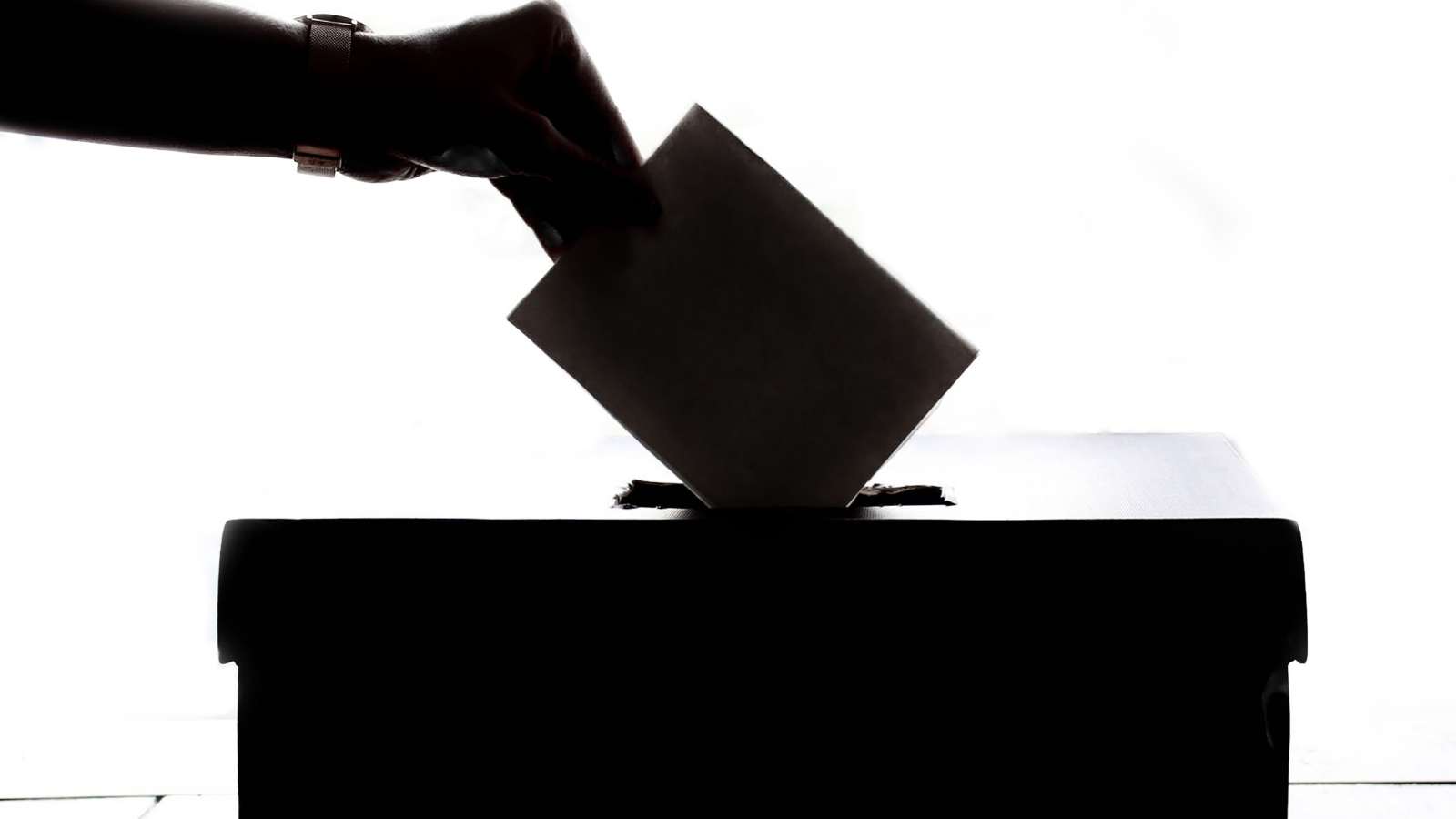
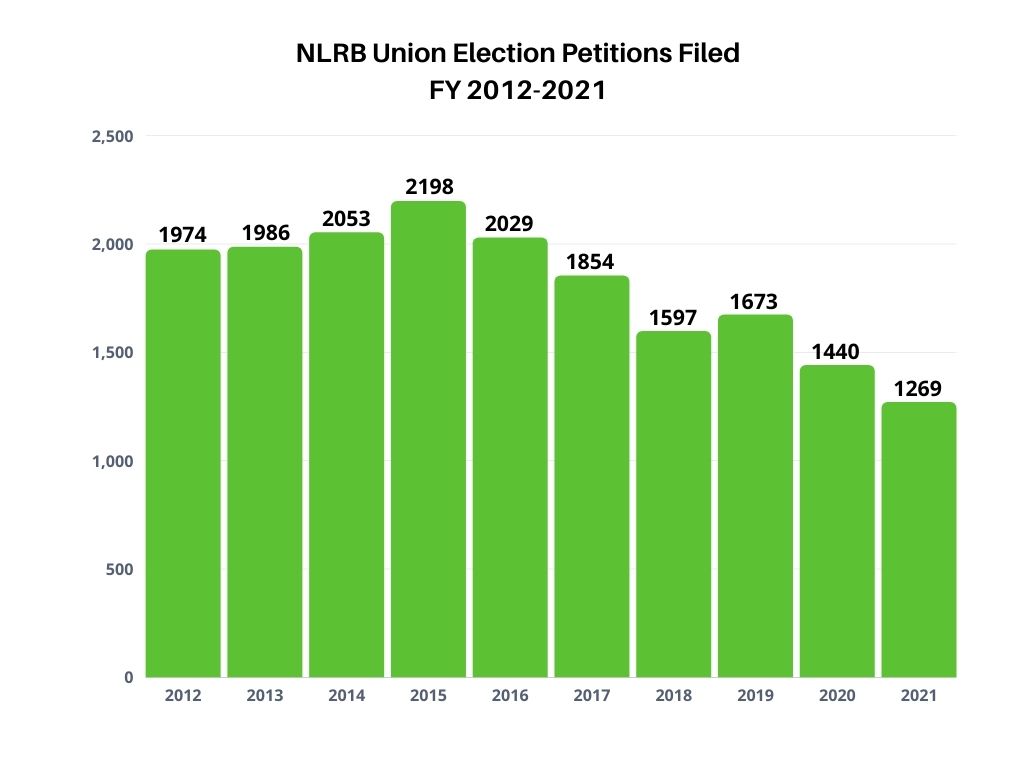
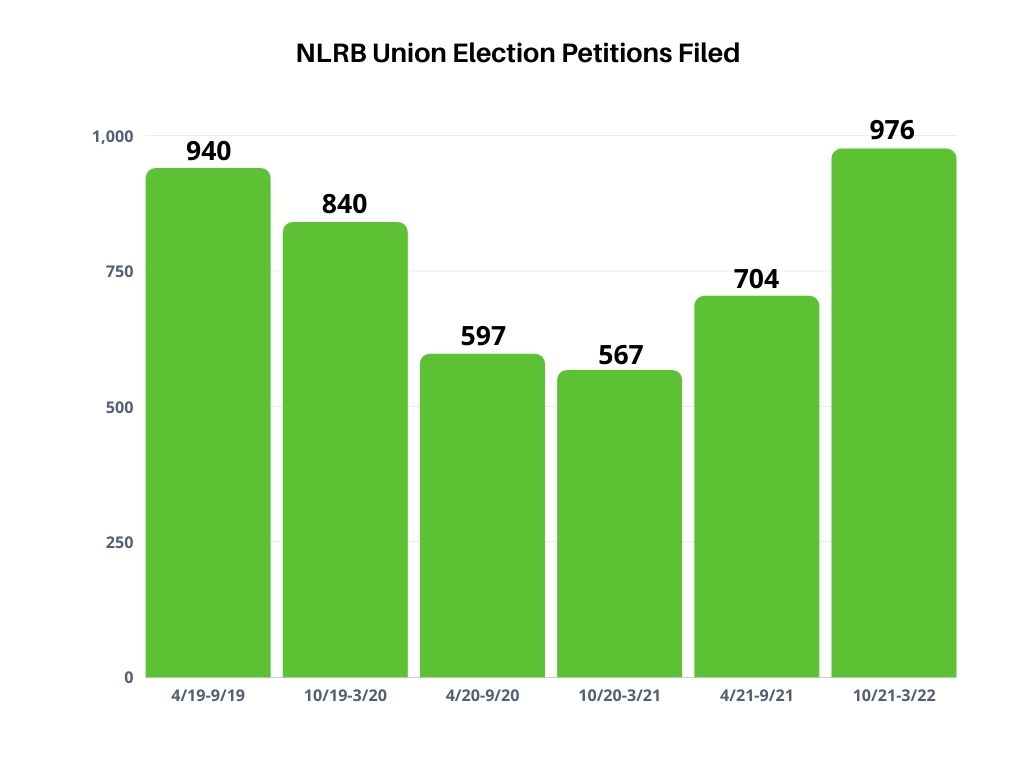
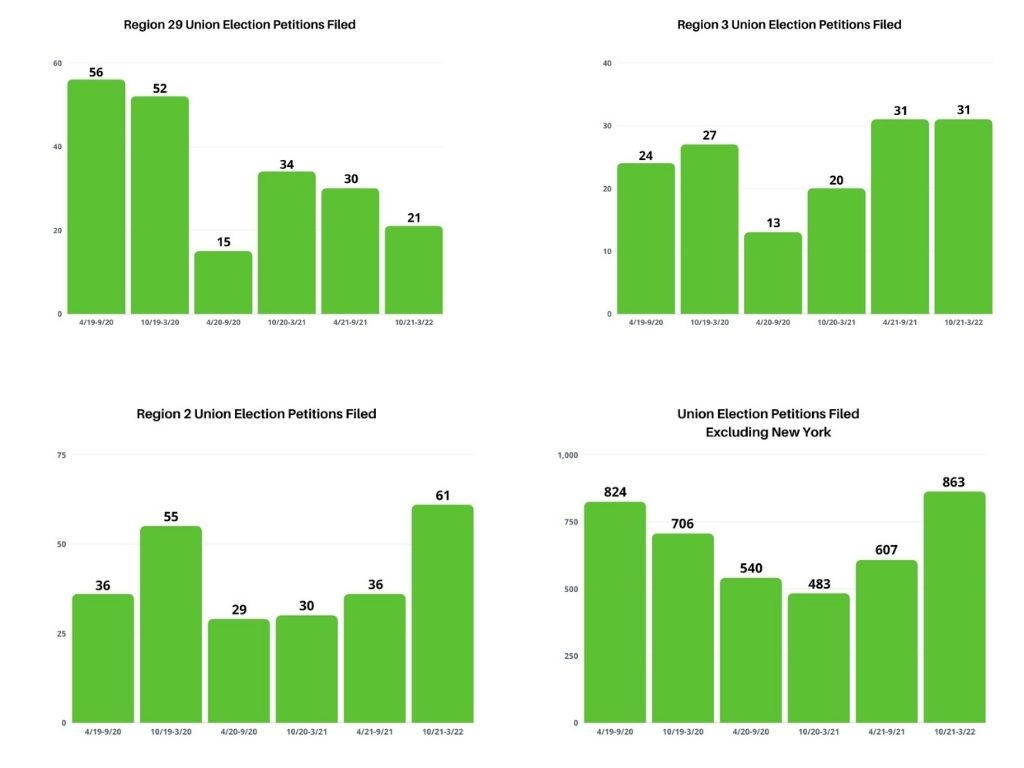
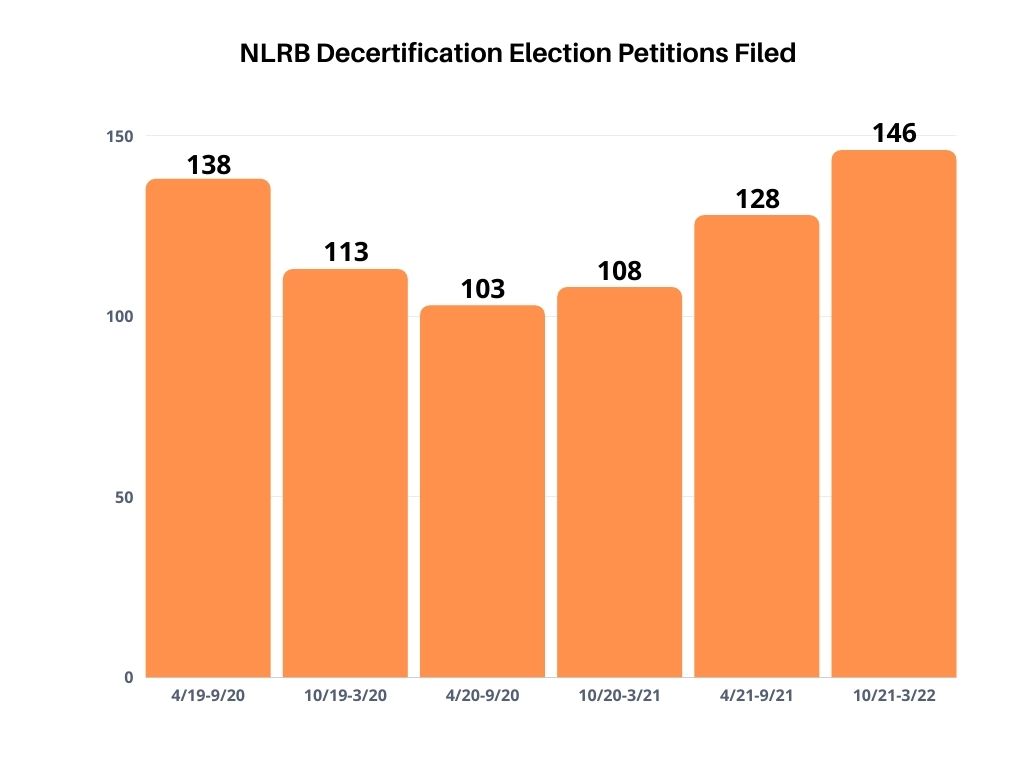
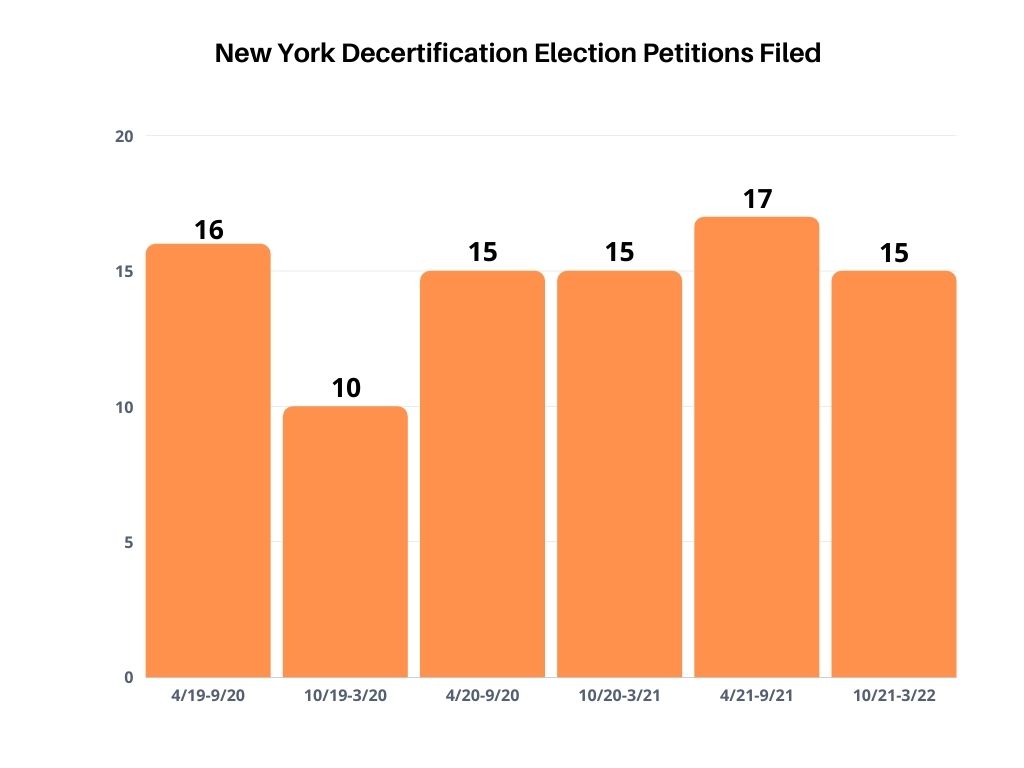

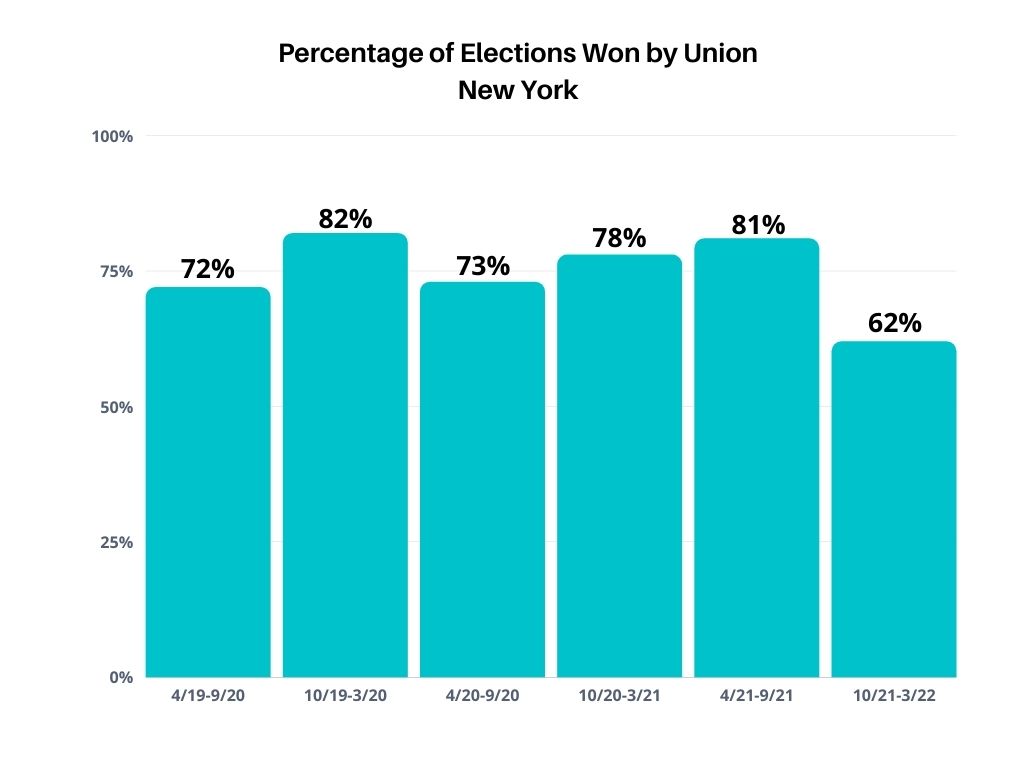
You must be logged in to post a comment.